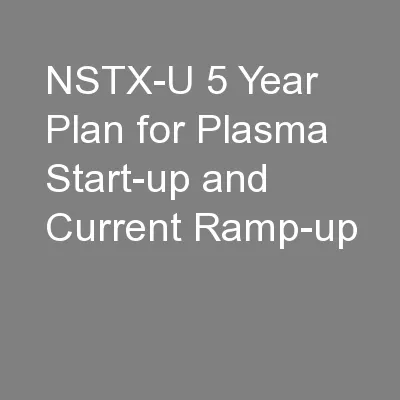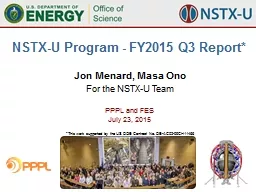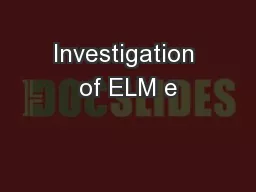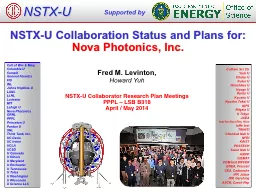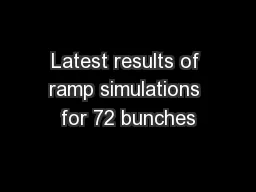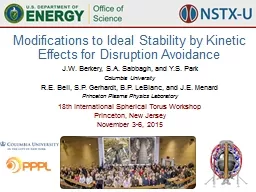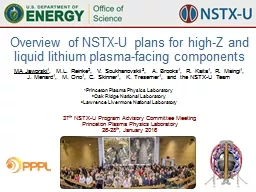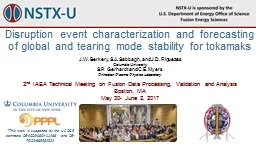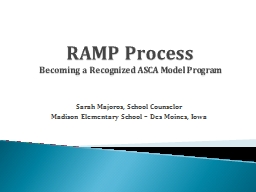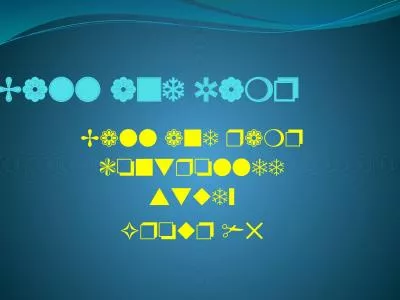PPT-NSTX-U 5 Year Plan for Plasma Start-up and Current Ramp-up
Author : karlyn-bohler | Published Date : 2016-07-16
R Raman D Mueller SC Jardin for the NSTX Research Team NSTXU PAC33 Meeting PPPL B318 February 1921 2013 NSTXU Supported by Culham Sci Ctr York U Chubu U Fukui
Presentation Embed Code
Download Presentation
Download Presentation The PPT/PDF document "NSTX-U 5 Year Plan for Plasma Start-up a..." is the property of its rightful owner. Permission is granted to download and print the materials on this website for personal, non-commercial use only, and to display it on your personal computer provided you do not modify the materials and that you retain all copyright notices contained in the materials. By downloading content from our website, you accept the terms of this agreement.
NSTX-U 5 Year Plan for Plasma Start-up and Current Ramp-up: Transcript
Download Rules Of Document
"NSTX-U 5 Year Plan for Plasma Start-up and Current Ramp-up"The content belongs to its owner. You may download and print it for personal use, without modification, and keep all copyright notices. By downloading, you agree to these terms.
Related Documents

